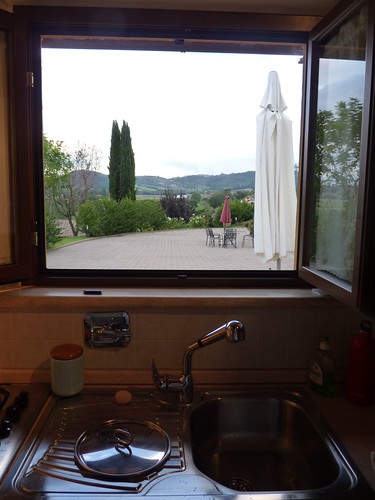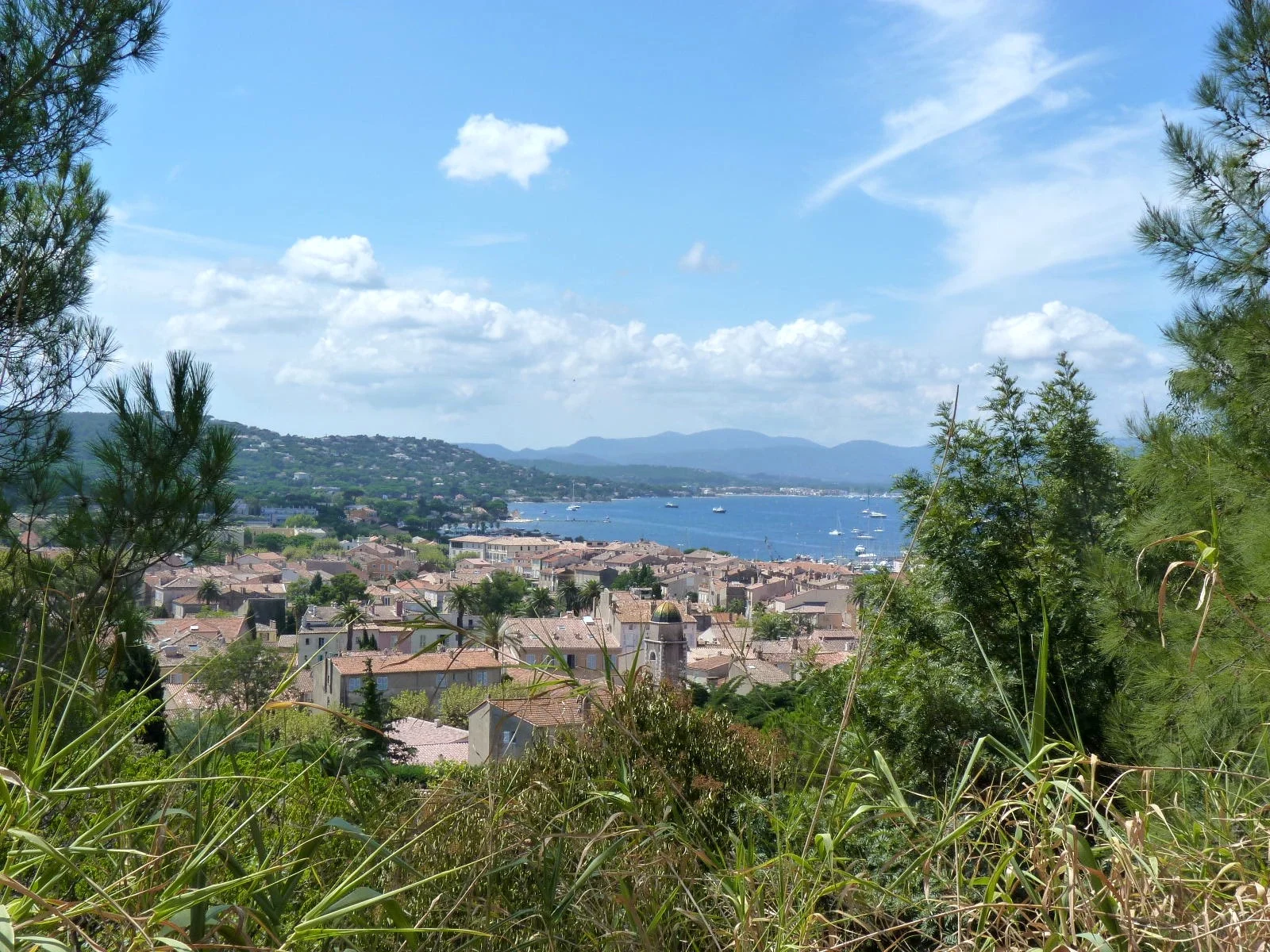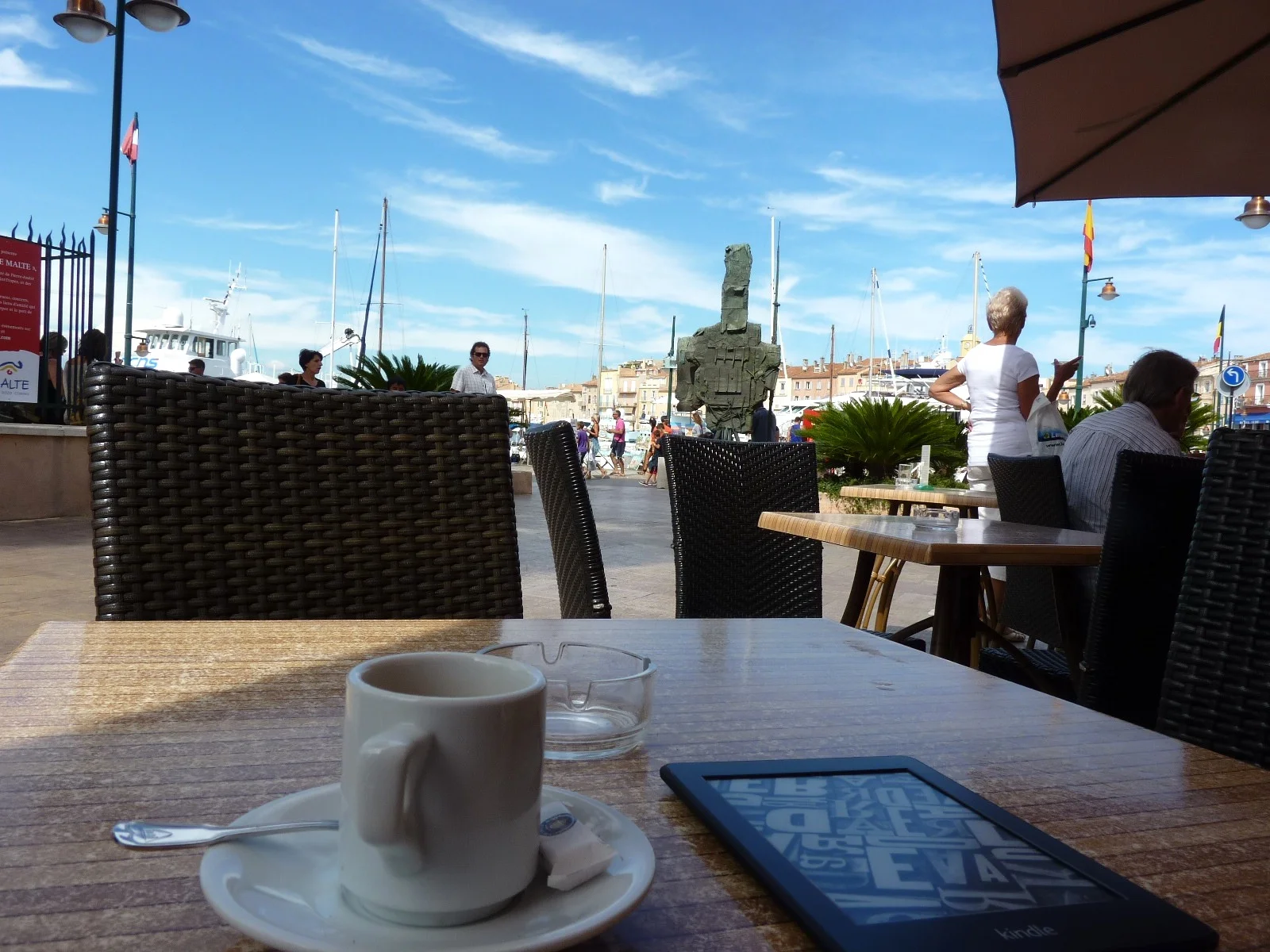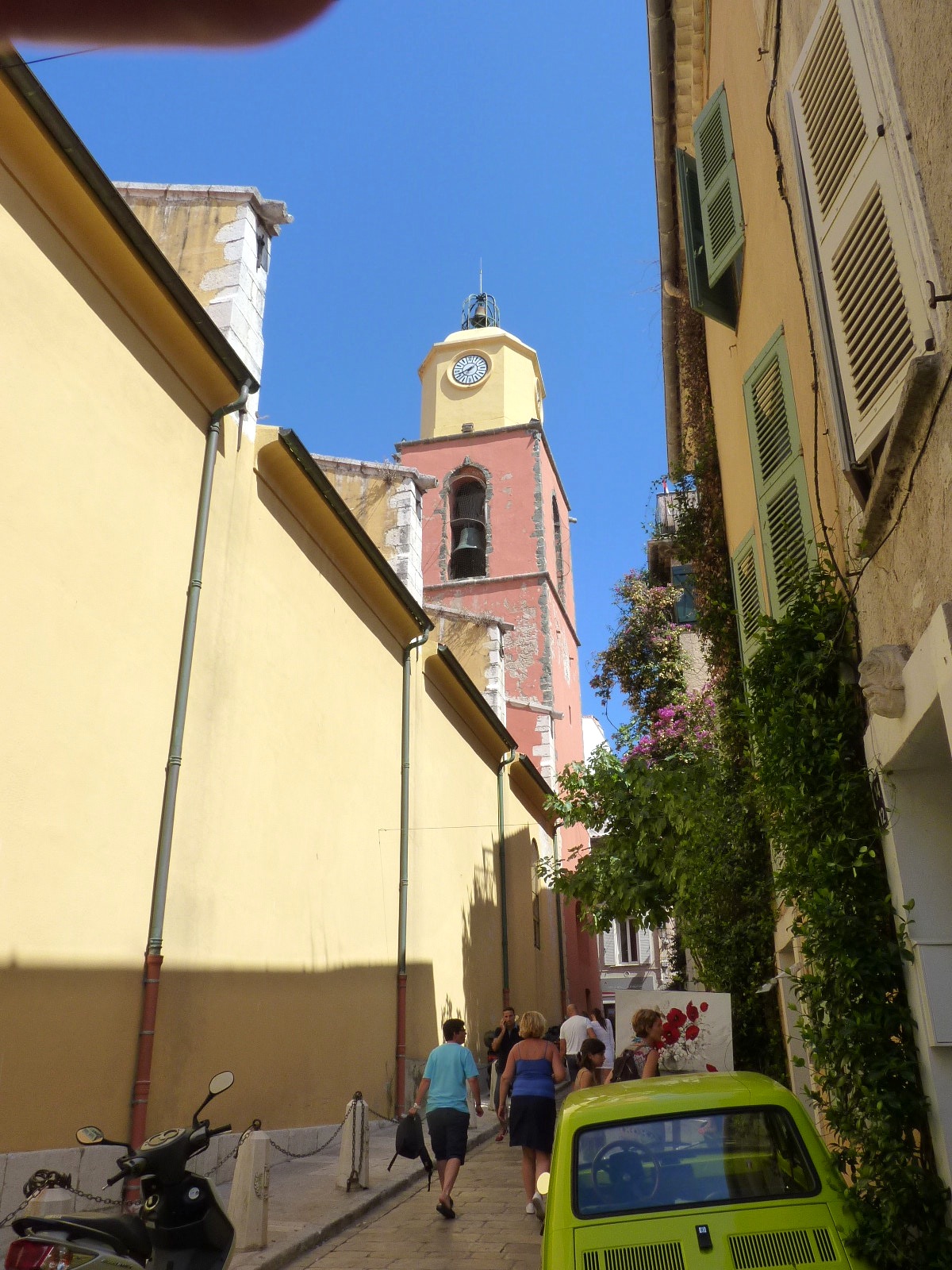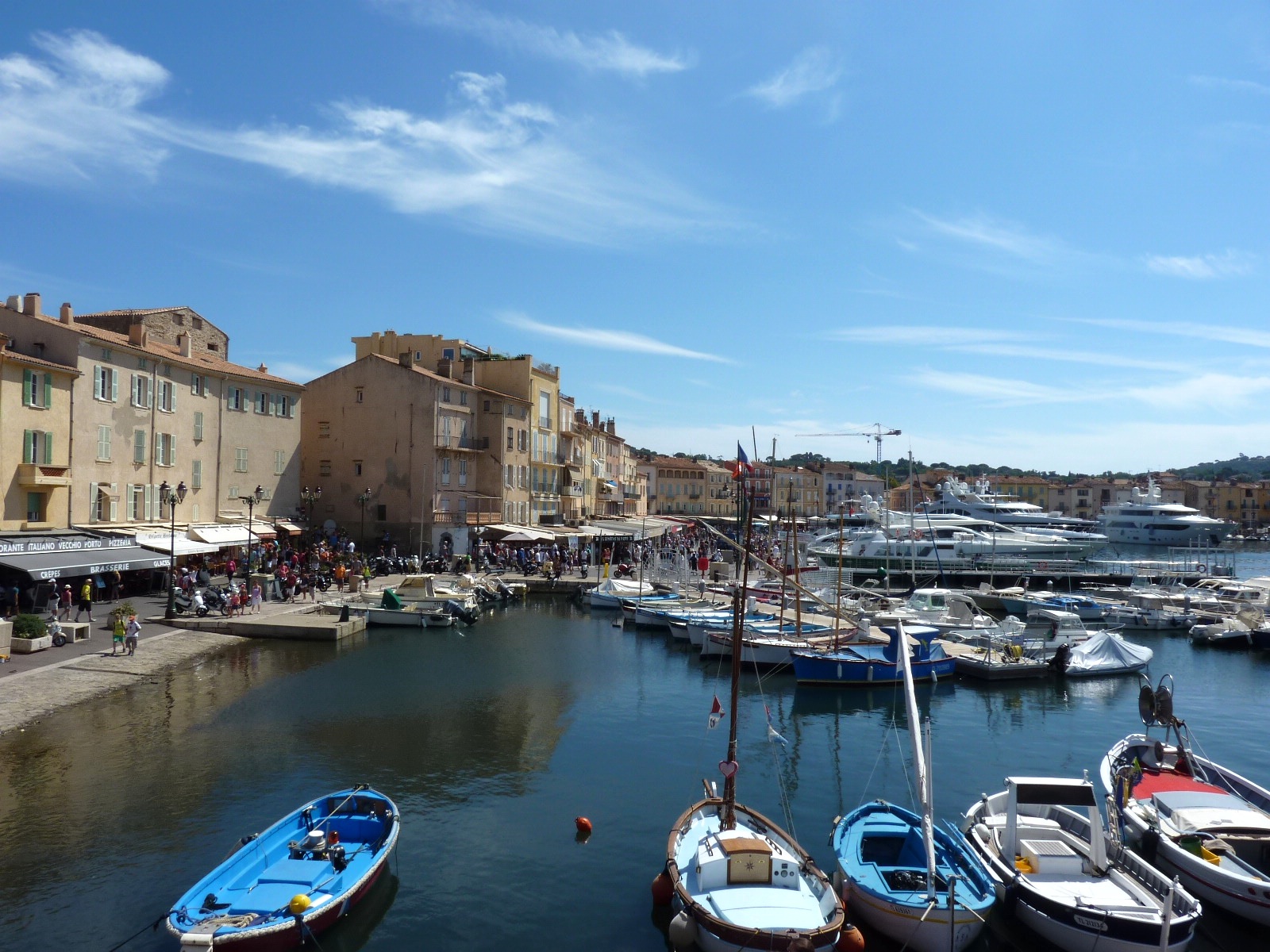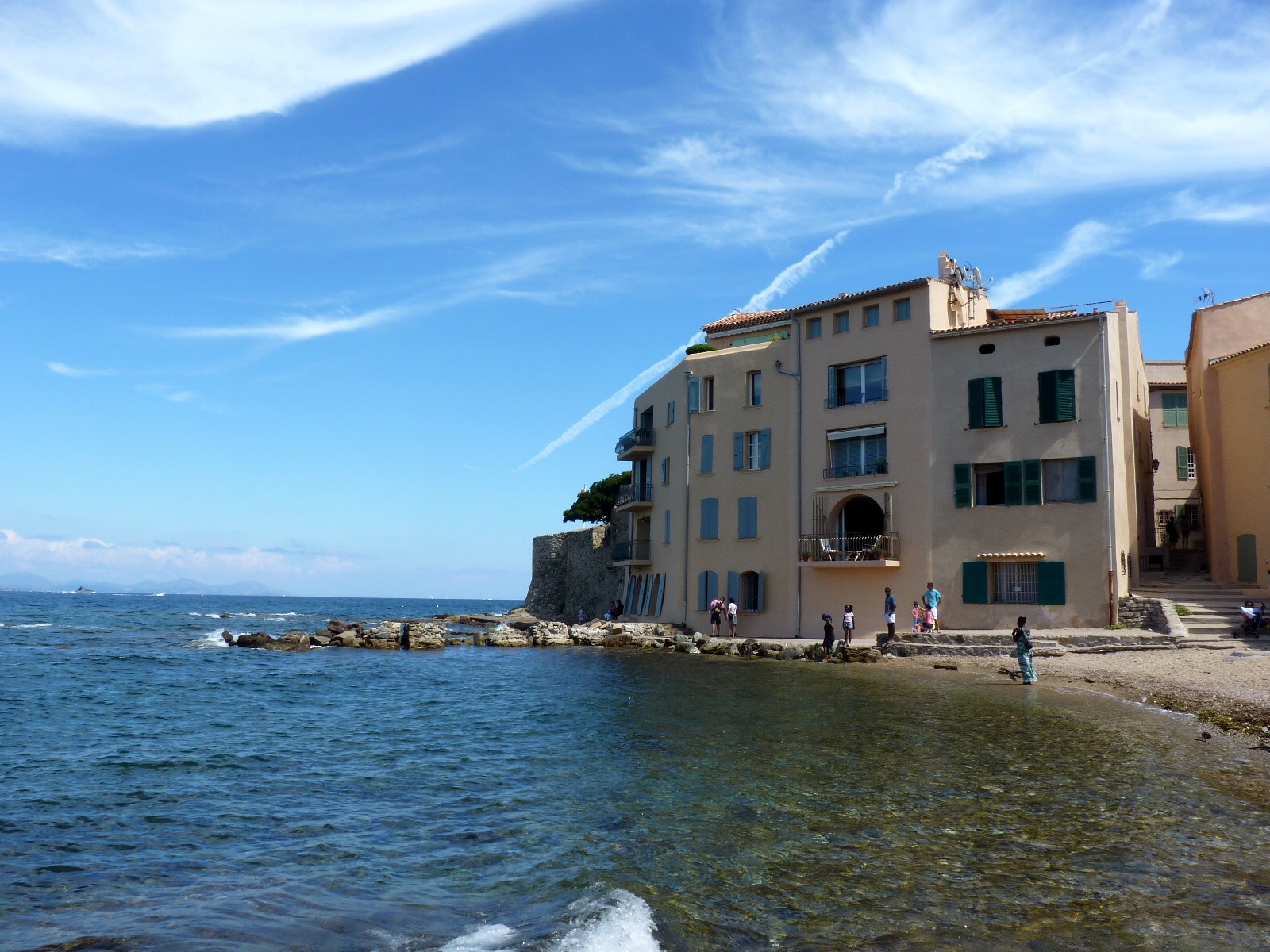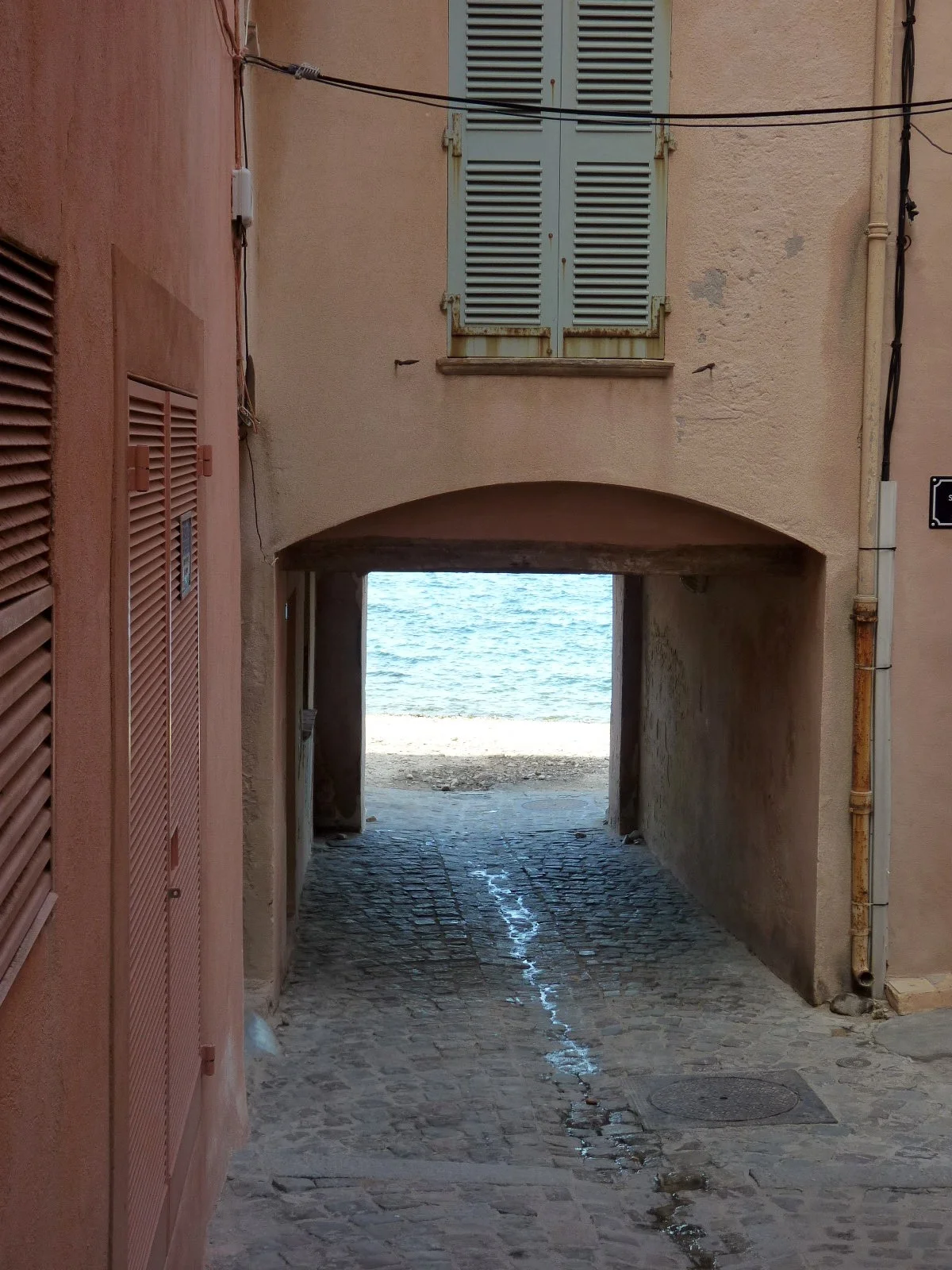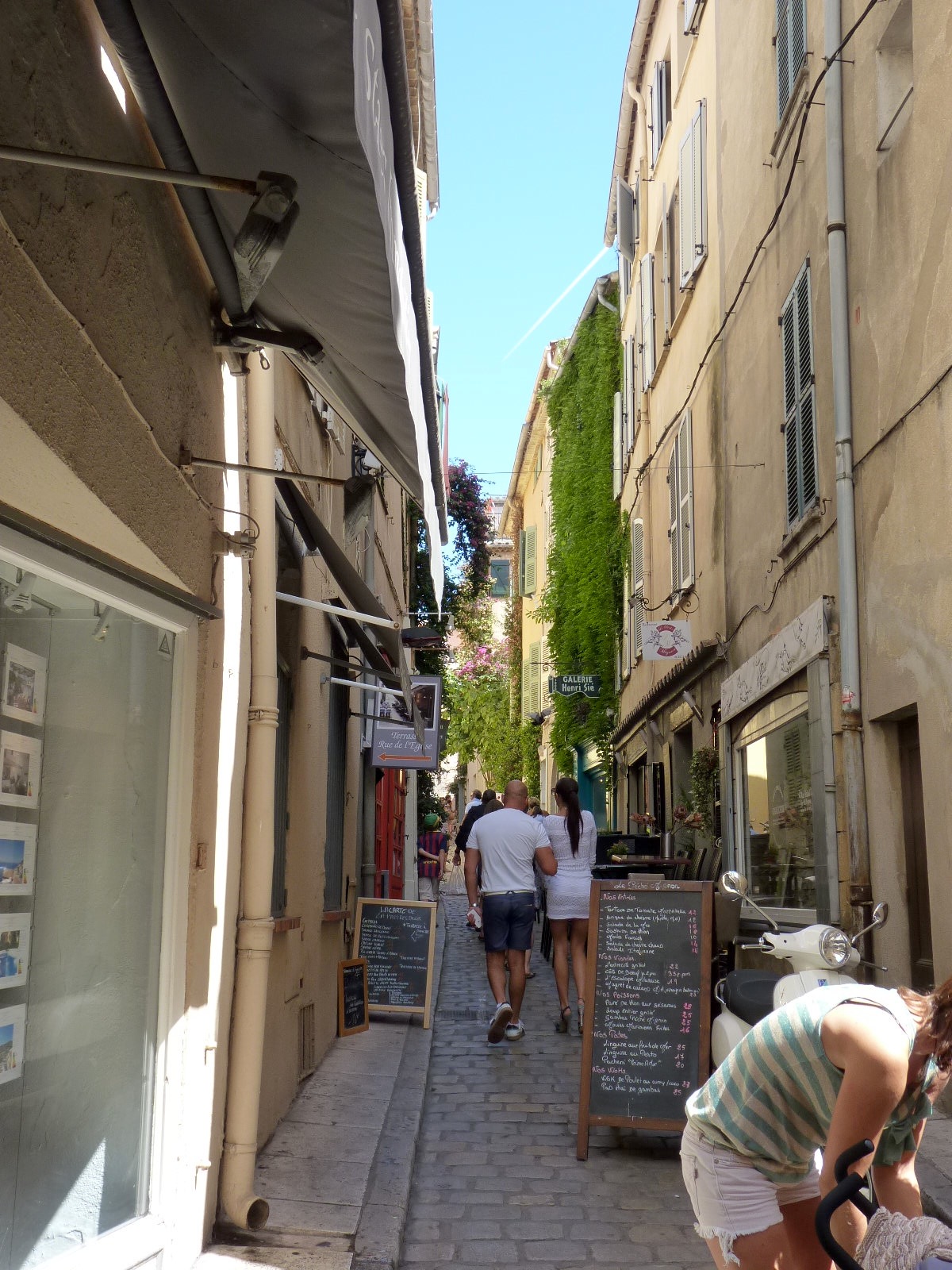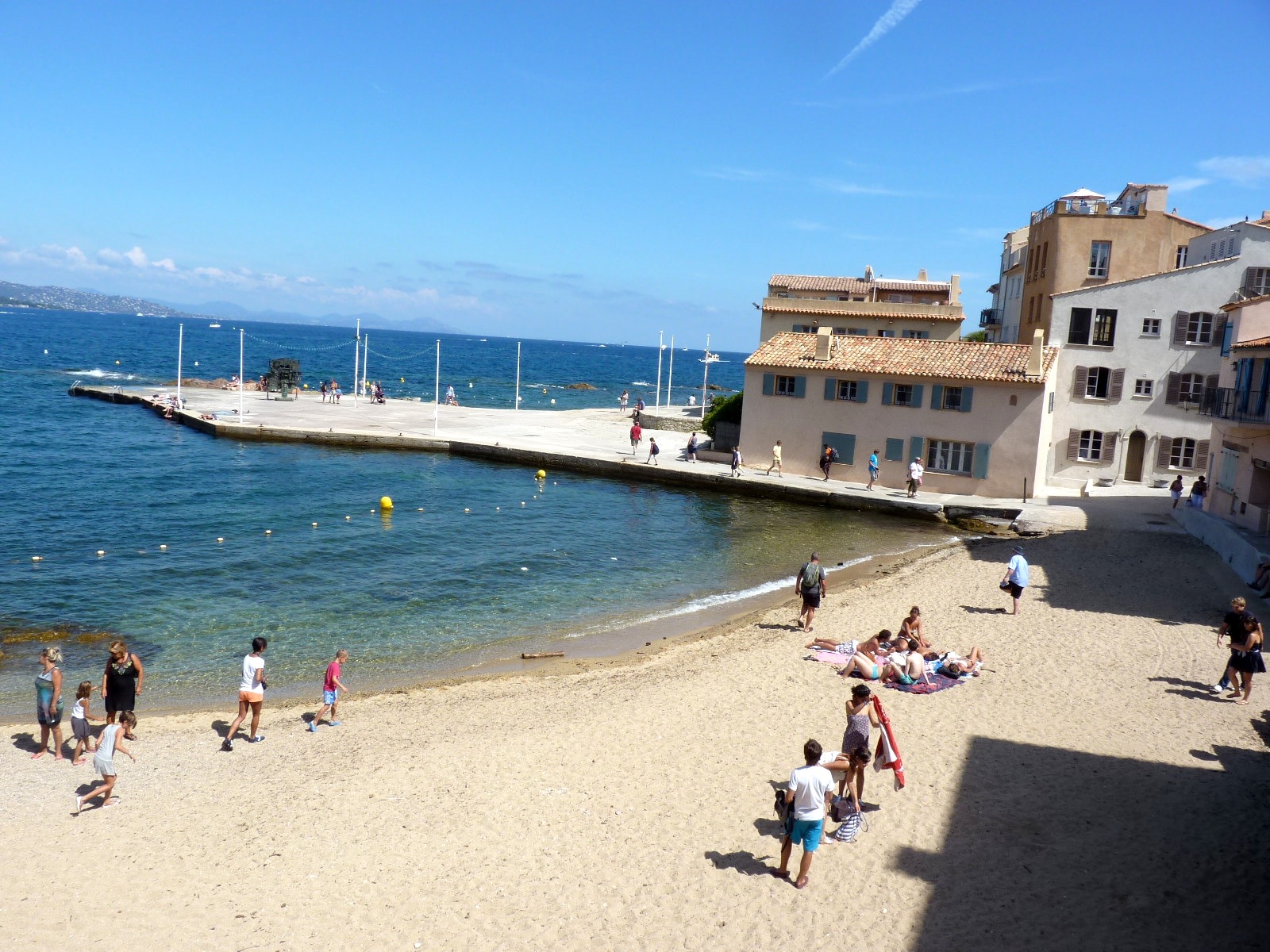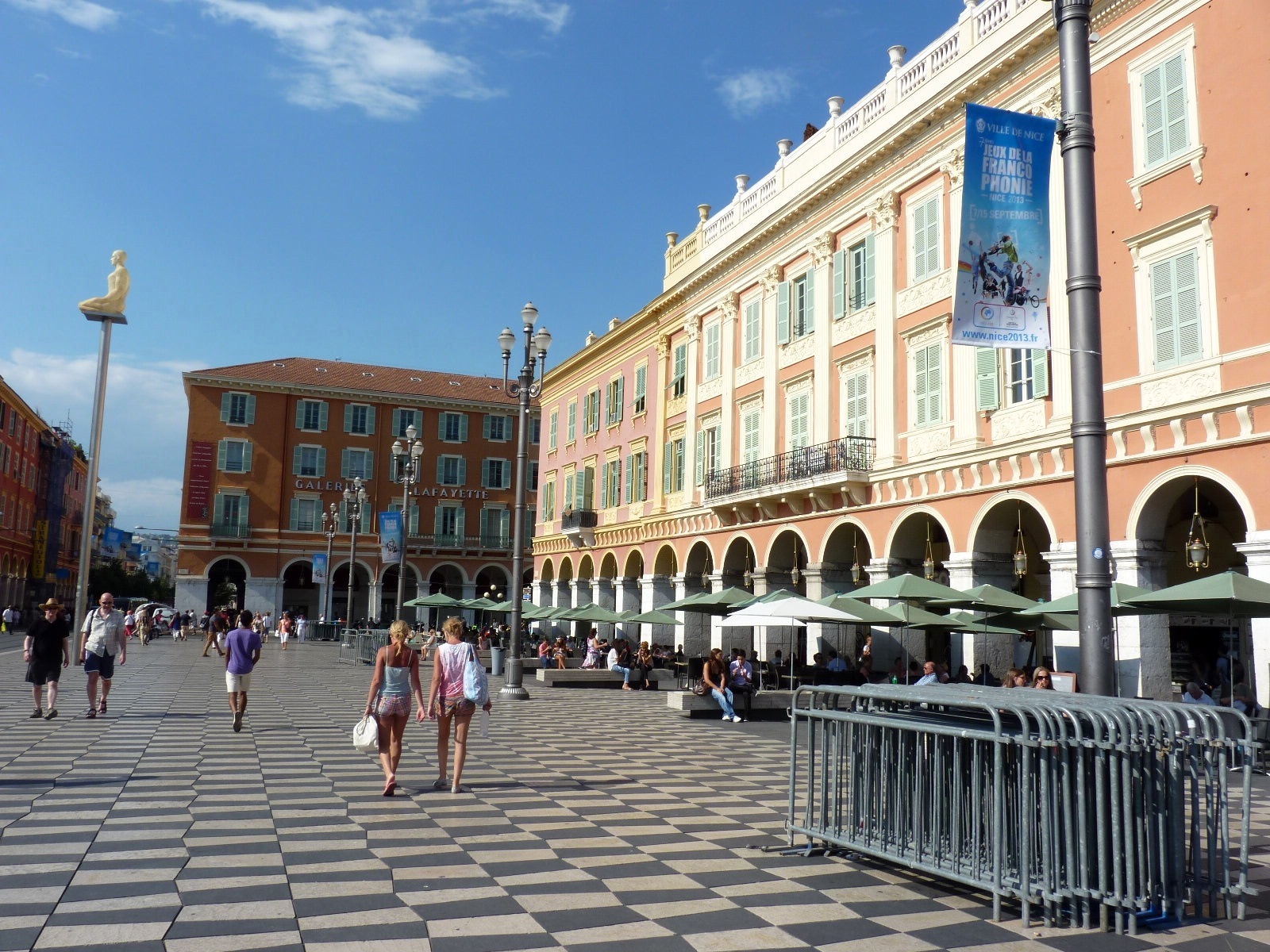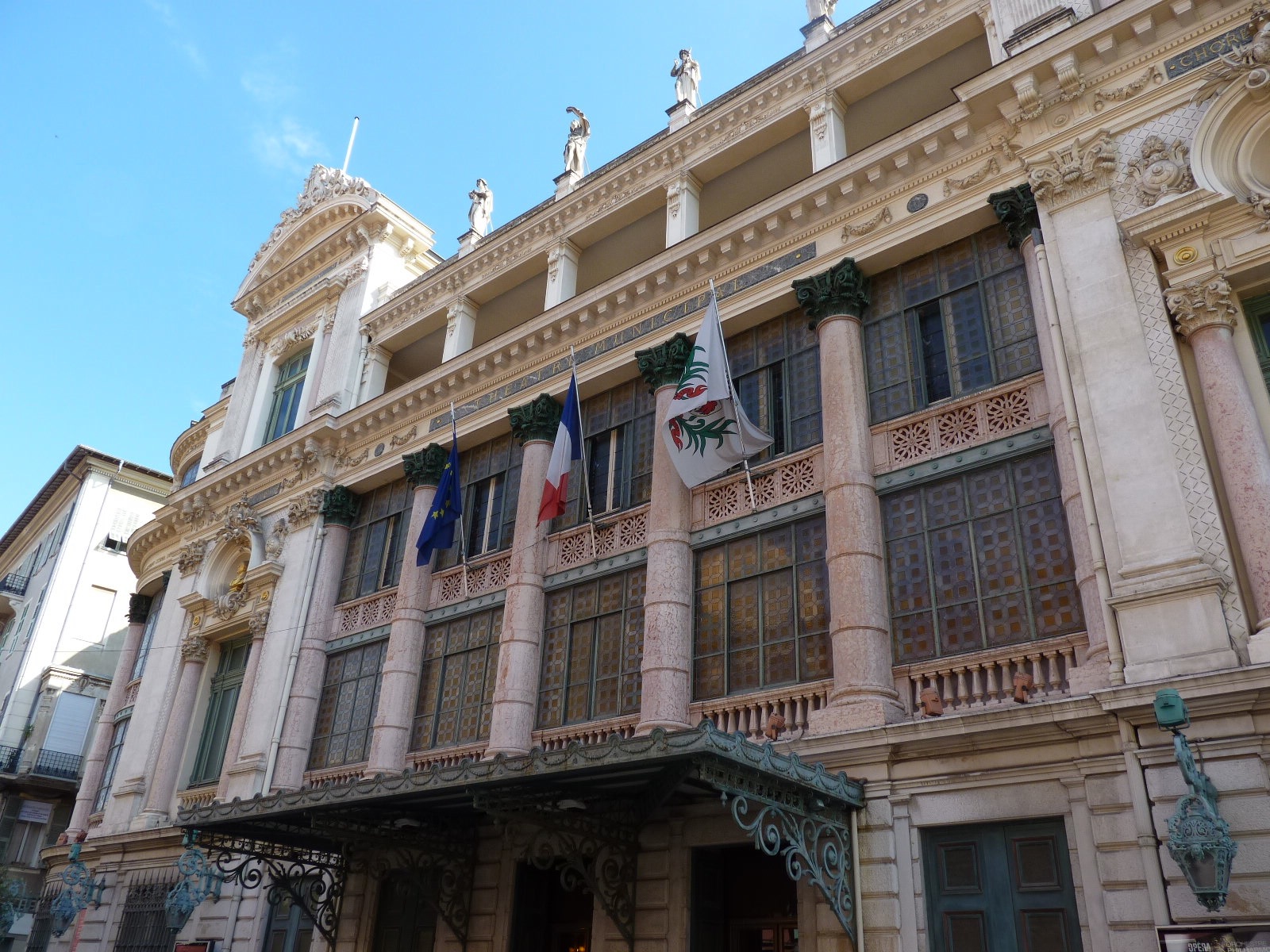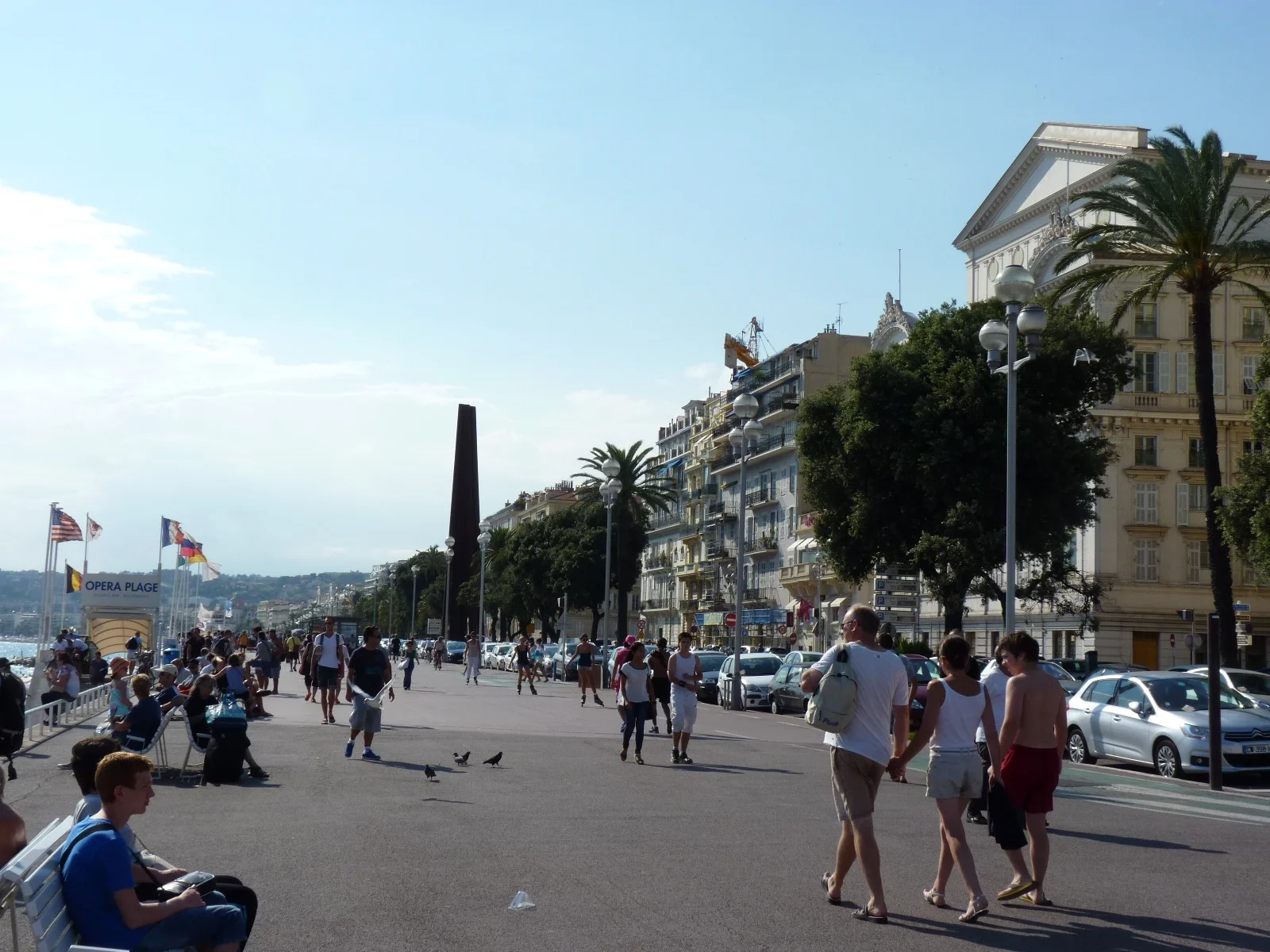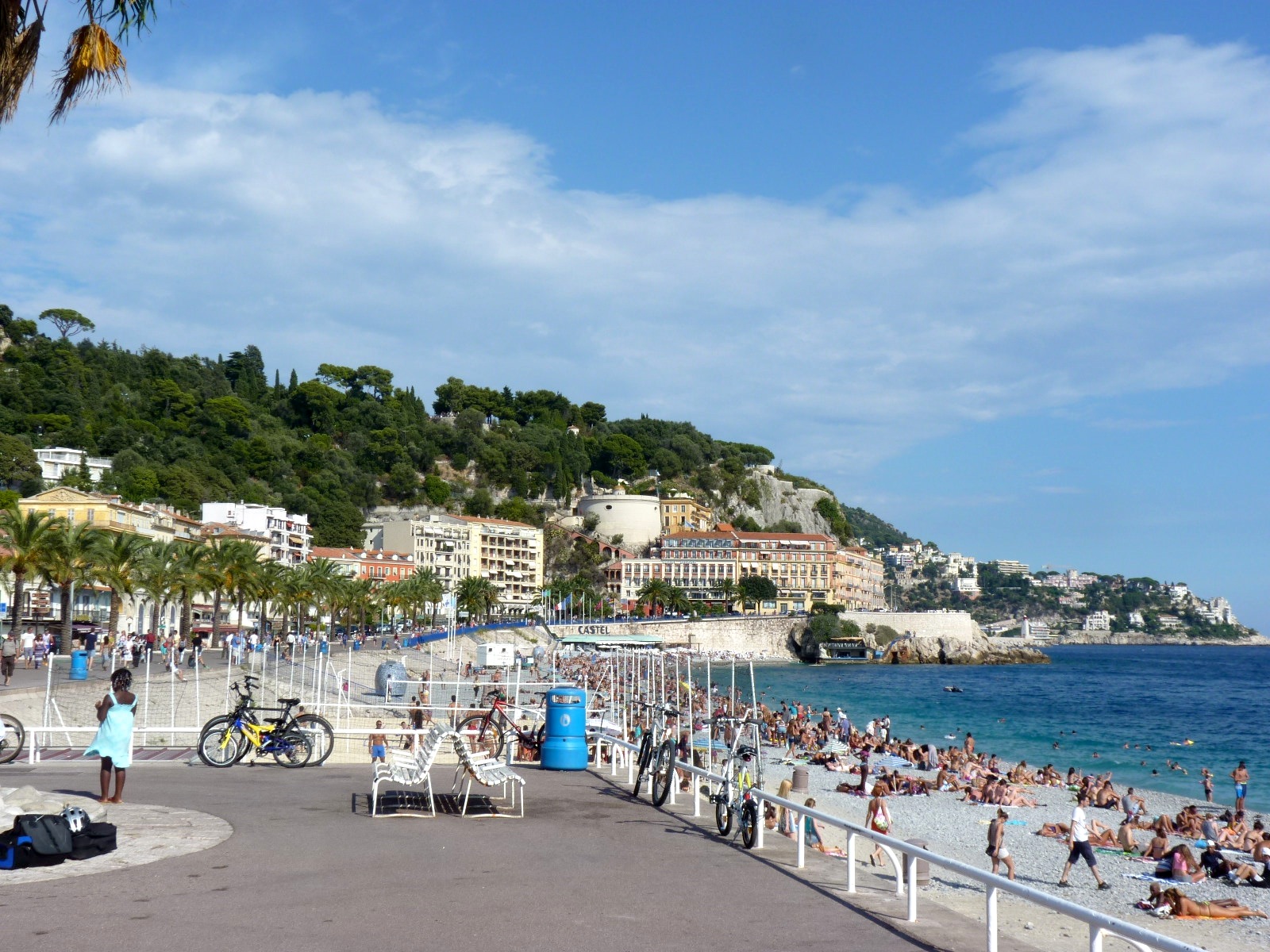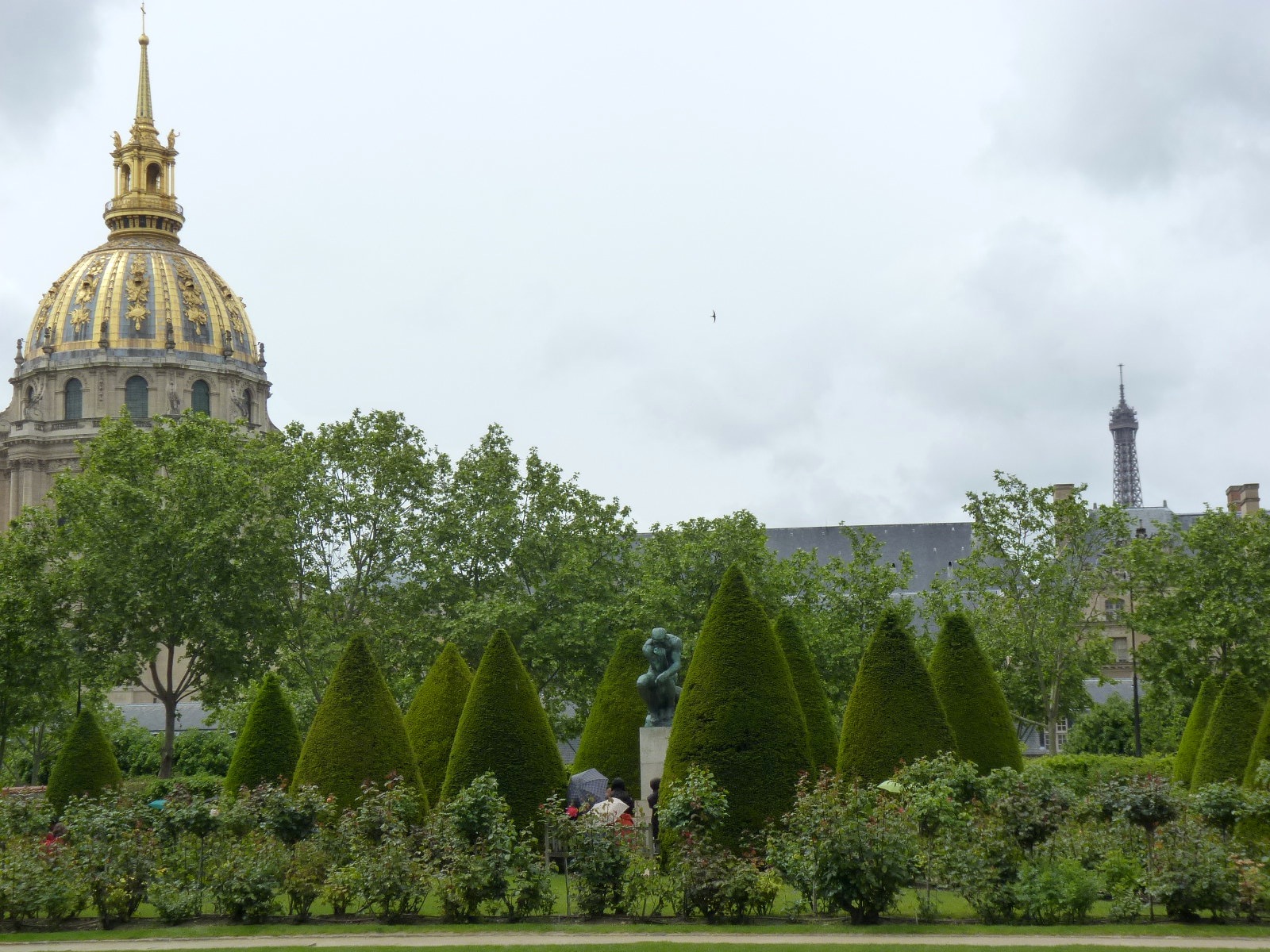Reconstructing Life After Travel
I've learned a big lesson since returning to the US after 10 months of travel overseas: reconstructing your life after travel is a lot harder than deconstructing it before leaving. There's something liberating about grasping the idea and belief that if you're willing to take the risk and let go of your material stuff, your job and your home, which in most cases is replaceable, that it won't be that hard to put it all back together again. It's a freedom from the constraints we and our society put on ourselves that is desirable. You have to have a good job, you have to have things, and sometimes nice things, you have to look a certain way. It creates not only a deep-set sense of competition among one another, but also a sense that it's the only way we can be 'successful' in life (I'm referring primarily to American culture here, but it certainly exists elsewhere).
So letting that go and absorbing the belief that you can not only live your life in many many ways, but that you don't have to stick to one way of life is incredibly freeing. But let's say you want to go and create the life of home+things+career+stable relationships? After stepping outside of that world, I see now how each aspect of that web relies on the other. Not that I really know at all what it's like, but I have begun to have a glimpse of just how hard it is for people to lift themselves out of homelessness.
Take for starters the necessity of a mailing address. Don't have one? Well then how to do you get or renew a drivers license? Don't have a license? How do you get a cell phone? I'm sorry, but your amazingly stamped passport is not the sort of ID they want. Is your temporary mailing address in another state? Well then how do you establish residency? And let's just say that you wanted to apply for food benefits, because the time it takes to get a job is longer than you expected. If you don't have a mailing address that's in your state of 'residency' - well - let me just say it creates a total cluster-$&*! of a mess with Human Services.
Let's move on to the housing side of this equation. Don't have a job yet, but do have savings to pay for an apartment? Good luck - no one wants to rent to someone without proof on income. Even as a freelancer, renters are wary. They not only want proof of income - and a lot of proof, they are going to want a seriously large deposit. In our case, one that would have depleted all those savings and made it impossible for us to have the time to find gainful employment.
Speaking of gainful employment, how do you become successful at finding and getting a job, much less showing up to work in a presentable and professional way, if you don't have a home from which to base yourself. How do you show up ready to work, if you don't have a steady place to make breakfast, get dressed, and feel centered? And how do you reach out to people in your profession in order to learn what's happening on the ground when it's difficult to know when you're going to be in the same city?
Mush all that together with the strange phenomenon that is reverse culture shock (if you're traveling it's best to accept the fact now that this will occur) and you've got yourself full of some likely uncomfortable feelings. Not to worry, although the process of deconstruction was relatively quick, I have no doubt that the passage of time will take care of any roadblocks.
It's not all bad of course. The long transition time of finding home and reconstructing the web has made for some fun experiences.
Namely, our home of Portland, Oregon, feels new to us. 10 months didn't seem like that long, but stuff happened here. New restaurants opened, heck there are whole new city blocks of restaurants and shops to explore. There are new murals and public art pieces which I'm particularly excited about. There's even a new lightrail line that opened while we were gone, and I can now get bus tickets on my phone. It's just like being on a travel journey, except I don't get lost and I can read the signs!!
I think the best part about this reconstruction is connecting with friends. For us, 10 months was the perfect amount of time to go off and do our travel thing but not be forgotten by the people at home. Their lives haven't completely moved on without us. As many stories as we have to tell, there are equally as many to listen to. It's a wonderful opportunity to share and get to know one another again.
Given the challenges, would I change anything? Mmm, no. Would I do it again? Yes! I'm ready to go right now! There's no way that taking an opportunity to do something that sounds crazy outweighs the benefit of not doing it. It doesn't have to be travel - for some folks that's not their vice. For me, I would make the same choice again and again, no matter how hard it was to come back.
What are the crazy things you want to do but aren't sure you should/could/would?
A Layover in Istanbul
When Jon and I made our arrangements to go back to the United States, we had to get ourselves to Springfield, Illinois for a 3 day visit and then on to Seattle where Olympia would be our final destination (until we find a place to live in Portland). In an odd yet perfect ending to this journey, our flight path back included an overnight layover in Istanbul. Knowing that we would be incredibly frustrated by landing in such an exciting place and having to turn around the next day, we were able to add a night to our layover, giving us 2 nights and 2 days in the Queen of Cities. Even though we’re pretty much out of money, we’re kinda tired of packing and unpacking the suitcase, I have no warm clothes for winter, and we got to a point where we’re actually a bit jaded by touristy stuff (“Oh, it’s a 9th century church, meh” or “Roman ruins? Seen ‘em”); we’re a little weirded out by the end of our trip.
This 2 day layover was a great buffer between our life for the last 10 months and our return to whatever life we’ll have in America. Plus, Istanbul is so incredible that it reignited that love of travel just so we know we’ll want to keep doing it. Here’s what we saw.
Arrival
Ataturk Airport is an easy connection to the city on public transportation, if you have time. We took the M1 to the Tl and got off at Sultanahmet, the very center of historical Istanbul. When you get off the tram and walk about 100 meters, you find yourself right in the middle of the Hagia Sophia and Blue Mosque. It’s breathtaking and overwhelming; humbling and inspiring. You realize quickly where you are – this incredible ancient city with monumental historical importance. The gravity of it all has yet to leave me. Our hotel was situated in the historical quarter. We knew that with a half day and one full day we’d want to be close to the sights. Hotel Senatus was great by the way – good value and excellent service!
Republic Day
We didn’t mean to, but we ended up arriving in Istanbul on the nation’s version of the 4th of July: Republic Day. After a bit of reading on the great site, Istanbul Eats, we decided that we should head across the water to Taksim Square, see that side of town and search for street food. Being in Istanbul on Republic Day made you feel like there could be no other country in the world with as much pride. Flags flying everywhere, people carrying flags, and the bridge crossing the Bosphorus lit up red. An impressive fireworks show and joyful crowd gave us the impression that this is a very happy and contented country.
After the fireworks we walked up the hill to Taksim Square. It was a great party atmosphere and we enjoyed our sampling of the famous ‘wet burger’ and a doner kebab (which was yummy). We ended up strolling down the main street of _____ with thousands of other people enjoying the cool night, open shops, hundreds of bars (apparently there are over 1000 bars in this neighborhood!), and the realization of just how hip, young and vibrant this city really is.
Our wanderings took us to have lacmahun (pronounced lakmajoon) a seasoned flatbread that you roll up with lettuce, tomato and lemon. Delicious! We decided that we should also have a solid hooka experience and while we were almost sold on the outdoor touristy looking hooka bar, we opted to continue further down a small alley where we found a funky place serving hooka for half the price. Once upstairs and installed on a comfy sofa we enjoyed our honey flavored hooka with a roudy group of Turks who took the opportunity when the night club music came on to start clapping and dancing.
Sightseeing day – The Blue Mosque
You can’t go to Istanbul and not see the Blue Mosque (ok I realize we went a lot of places and didn’t see really important things, but most of that was a budget issue – the Mosque is free – GO). Bring a scarf if you’re a lady and be prepared to take off your shoes. It’s as every bit as incredible on the inside as on the outside.
There’s something about Islamic art and architecture that is rich and astounding in such a different way from other religious art. The detail, the symbolism and the color instantly transport you to a holy place. In Islam there is no portrayal of people as it would be seen as idolatry, so you are presented with patters, design and stunning Arabic script. The low-hanging lamps and plush rugs for prayer provide understanding into this beautiful religion. And yes, Islam is a beautiful religion – it just has some really crazy followers.
Unfortunately, despite the fact that cleanliness is a tenant of Islam and the mosque itself and its grounds are impeccably clean, the throngs of tourists with no shoes makes for a pretty stinky visit. Didn’t expect that one!
Basilica Cistern
Because we arrived just before the mosque closed for prayer time, our visit was short. We were going to cross the square and visit the Hagia Sophia, but the lines were stupidly long so we decided to check out the 3rd site we had on our plan: the Basilica Cistern.
Built in 542 AD, the cistern held a large supply of the city’s water. This is no basin of water, it’s an underground palace, with over 350 columns and archways to match. Cool, shallow water still gathers, and koi effortlessly meander in the water. The dim, but striking lighting and quiet Turkish music make this place truly a wonder, and one where I found myself just wanting to sit peacefully, soak up the coolness and history and enjoy the quiet. Definitely worth a visit.
Hagia Sophia
There are some things about the Hagia Sophia that make this site almost too much to believe:
It was originally built in 360 AD. It burned down and was rebuilt twice. The final time, and the main structure that stands today, only took 5 years and 10 months to build and was finished in 537 AD. 10,000 unskilled workers and 1000 craftsman pulled it off. It was a church for 900 years – yes 900 - before Sultan Ahmed II came and conquered the Byzantine capital and transformed it into a mosque in 1453 AD. What’s even more amazing about it (and the Ottoman conquest in general) is that although it was converted to a mosque, it’s Christian origins, artwork and symbols were kept and retained. I have never been in one building where in same view frame of your eyes you can see a Virgin Mary holding Jesus, and the symbol for Allah. Again, the gravity of the place starts to sink in.
The Grand Bazaar
The world's largest indoor market is indeed big and there are lots of ways you could spend money. Given its size, this market actually felt calm, completely organized and plain easy compared to the markets in Marrakech, Senegal and Mali. Turks are also incredibly fair when it comes to a sale, and although bargaining is a must, they're very unlikely to take advantage of you. Makes the whole experience a lot easier.
Seafood on the Bosphorus
We had a chance to meet up with a friend of mine from my study abroad days in Strasbourg. Since Jon and I had no idea what there was to do, we let Bilge be our guide for the evening and were treated to a locals tour of the best Istanbul has to offer (so it seemed). We had fresh Mackerel and a spread of local dishes for dinner. Followed by a visit to the best Baklava shop in Turkey (that’s what she and everyone else says!). This was followed by a walk up the hill back to Taksim where we wandered the back streets only a local would know in order to get a hill top view of the Bosphorus Strait.
It was at this point where I embarrassingly realized that when everyone was talking about the “Asian side” of the Bosphorus, they weren’t talking about a super large Chinatown per say, it’s actually ASIA. Yeah I know, you think that’s silly, but when you’re standing on the actual line between continents and they are only separated by a small body of water but these two continents are still part of the same country, then what would you say?!
Our visit with a local also drove home the juxtaposition between the seemingly calm and peaceful Turkey we had as tourists, and the underlying tension and anger that actually exists among Turkish people. We hadn't really followed the news of the riots earlier this year in Taksim Square, but were fascinated by how different a place can feel than what is really going on.
Departure
We had a great, short visit to Istanbul, one that whetted our appetites for travel, even though we're now back in the US and taking one final flight back to the Northwest tomorrow. But homecoming is a different topic!
What's been your favorite layover?
Our Work Exchange Part 2
We arrived at our HelpX stay almost 1 month ago, and life in Italy has been good. We’re doing a fine job of enjoying the dolce vita (sweet life) in addition to working hard and seeing a lot of what Umbria has to offer. This has been a great work exchange and we’re incredibly grateful for the experience. From Farm to Hotel
As you may recall we began our work exchange at the home farm of our hosts, Ev and Claudia. We tended grapes, did a bunch of gardening and weeding, took care of the chickens, ate a lot of figs and enjoyed the quite life of rural Umbria.
Before we arrived, we knew that there two other volunteers who had made arrangements to be at Ev and Claudia’s during the wine harvest so we had some overlap. And since we wanted to stay longer than these other volunteers they offered to let us stay at Claudia’s bed and breakfast near Perugia, Il Casale della Staffa, in exchange for sanding and re-staining all the windows and me finishing the website. So for the last 2 weeks we’ve been living in one of the apartments at the B&B, working in the morning, sunning by the pool midday and then visiting the beautiful towns and villages of Umbria in the afternoons.
I won’t lie, it’s been pretty great. Being in Italy is like being on a never-ending honeymoon for us. Everything is beautiful, delicious, romantic and even if the work isn’t too exciting, how could one possibly complain when you have this view out your kitchen window???
Assisi & Montefalco
It seems that there’s always some kind of festival or event going on here. Maybe that’s because it’s harvest season, but we’ve been really fortunate that there’s a festival going on all the time – I’m serious – music, arts, food, wine and soon to be chocolate. There’s a lot happening in Umbria apparently.
Jon is going to write about the incredible Montefalco Wine Festival that we went to so I won’t steal his thunder there. I will say that Montefalco – also called the banister of Umbria – is a delightful little hill town. If you like wine, this is the place to go in Umbria. It’s known for its Sagrantino, a grape that only grows in this region of the world. That in addition to the other “typical” products of honey, truffles and cured meats makes for Montefalco to be a delicious place to be, both for the eyes and the senses.
We also had the opportunity to visit Assisi – the namesake for Francis d’Assisi or Saint Francis (hello San Francisco). Despite the fact that Saint Francis was practically a hermit and lived in nature, trying to be a very humble figure within the grandure of the Catholic Church, Assisi is an impressive town with an even more impressive Cathedral built in Saint Francis’ name. We saw it first from the road at night, and then up close during a visit with our fellow helpers.
The climb up to the historical center is not only a good workout but also a beautiful introduction to this holy city. Signs of devotion are everywhere. Making one’s way down the main road you pass a Roman temple from the 1st century BC, which became one of Saint Francis’ churches. I loved being able to clear see the Roman qualities to this temple, and then the medieval addition that is the church. It’s such a great example of how these ancient sites have developed over time.
Another thing that caught my eye was the banner hanging from the church depicting a visit by the Pope, Francis, to Assisi on October 4th. Have you ever met a Jew who’s this excited to see the Pope? Probably not – I mean, come on, he’s pretty hip you have to admit.
St. Francis’ cathedral is really stunning, and I love that all the paintings and frescos (by Torriti, Cimabau and Giotto on the upper level and by Lorenzetti, Giotto and Martini in the lower basilica) inside tell the story of his life and deeds –something rare for churches at the time. This is a place of pilgrimage for many Catholics. Despite that, I still didn’t feel pulled in by a spiritual magnet to this place, until we went below to visit St. Francis’ tomb. A quiet, simple, modest room, candlelit, with St Francis resting in the very stone column that runs the entire height of the cathedral – not only is this structurally important – it’s symbolically perfect – he’s holding this place together. I was really moved by that place, in the midst of all the art and magnanimity of the churches and the age and beauty of the towns we’ve seen – the tomb of St Francis is something I will never forget.
I also won’t forget the truffle/lardo/salami sandwhich we got right on the main drag in Assisi – surrounded by touristy places it was a slim chance we’d get good food. But that was a spiritual experience in and of itself.
Harvest Time
This arrangement has clearly been pretty great. It’s allowed us time to intimately get to know the region of Umbria, and our hosts are accomplishing tasks they haven’t been able to.
This week is what we’ve been waiting for: grape harvest. We’ll head over to the house early in the morning on Wednesday and hand-pick the grapes. They’ll be taken up to the ‘cantina’ - not a bar – but the place where the wine is made. The cantina is a small room in a 15th century church by the way that’s up the road from the house. Our first day’s work in Italy involved painting it and cleaning the floor in preparation for wine making. It’ll be wonderful to actually mash the grapes, and see the whole process from start to finish – actually building the cellar, to tending the vines, picking the grapes and making the wine.
Umbria is really beautiful and if you ever get a chance to come here, I can’t recommend it enough. We’ve visiting Corciano, Orvieto, Todi, Betona, Montecastello di Vibio, Castiglione del Lago, Passignano, Marsciano, Foligno, Montefalco, Assisi and driven through countless hamlets and villages which all have their own charm. What’s amazing about these towns is that they all feel different and have their own traditions. They’ve all survived hundreds of years of turmoil and wars being propped up on their hills. Pretty smart if you ask me.
We still have the big Tuscan cities on our list: Siena, Arezzo and of course Florence. I can’t say it enough how grateful I am for this arrangement. A few hours of work a day is a small exchange to live here for 2 months, practically for free.
A Quick Trip to Rome
You may be wondering why these posts are always about a 'quick trip.' 2 days in Barcelona here, 2 days in Frankfurt there, 1 day in Nice, and now only 2 quick days in Rome. Why spend so little time in these magnificent places? I'm beginning to ask myself that too. But simply, at this stage in the game, it's a question of cost. Cities are expensive. Even budget accommodations, coupled with food and the biggest expenses for us - accommodations and attractions - make it difficult to be able to spend a lot of time in big cities. It's a shame really, because there's a lot to see in these places. But we've settled on the idea that these are small 'scouting trips,' for future visits. At least then I can convince myself that I'm coming back :) Regardless, Rome is an incredible city. I mean, for one, it's Rome. There's old stuff there; and that's an understatement. It may not be as old as Jerusalem, Athens or Cairo, but let's face it, Rome has an undeniable importance in the world's history.
This is our first trip to Italy and so everything is new and shiny (even if it's 2000 years old). Through a fluke in my understanding of Jon's arrival from Frankfurt, I arrived in Rome on the 31st, while Jon arrived on the 1st of September. No worries, I got a head start getting the layout of the city, trying gelato and taking a glimpse at the once-center of the western world.
Alone in Rome
I will admit, I was a little nervous to be a very blonde woman in the Italian capital. But I quickly realized that Rome is extremely safe. Also, given that Italian ladies are gorgeous I'm pretty sure no one is interested in hassling an obviously-unfashionable tourist who clearly isn't carrying much other than a water bottle and camera. So with confidence I easily managed to walk to a nearby restaurant in the Termini neighborhood and dig in on a 9euro 3-course meal. Pasta, the best chicken salad I've ever had and beautifully roasted eggplant were a perfect introduction to easy Italian food. I spent the rest of my first evening memorizing useful phrases (like, 'una coppette di gelato per favore' or 'a cup of gelato please') and creating our plan of attack for our 1.5 full days of sight-seeing. Plus, I had to find out where great pizza was located.
What to see in Rome when you have no time
The theme of this post is clearly that we had little time in Rome; as well as a small budget. Once we were happily reunited from our 10 days apart, we did the best free thing one can do in our situation. We walked everywhere. Jon and I walked to the Piazza della Republica down to the Tomb of the Unknown Soldier (which is enormous and incredibly impressive) through the Roman Forum down to the Colosseum and back to the Termini station where our hotel was located.
First impressions? Roman ruins are everywhere. Some of them don't even have signs. I felt that Rome must be much taller than it was in Roman times, given how deep the excavations are, and how much has been built upon since then. I also wondered if Rome has a building ordinance for height because nothing is taller than the Colosseum. No skyscrapers, no modern buildings. This is really interesting to me.
We of course stopped for a slice of pizza - which they price by the kilo - and gelato at the recommended Il Gelatone on Via dei Serptenti. Delicious. I satisfied one of my images of Italian cities of people sitting around a fountain in the center of a piazza, chatting, drinking wine and socializing. We partook in this and it was lovely. There are beautiful tiny churches everywhere and one of the joys of walking in Rome is stumbling upon them, going inside and seeing the frescos and art.
I cannot overstate the grandeur of Rome. It's different from that of Paris, which is hugely expansive with iconic monuments popping up everywhere. Rome is actually quite compact, walkable and accessible to the visitor. But you cannot help but feel steeped in history, with something to oggle at every turn of a corner. Indeed during our walk across town at night, we were dumbfounded by the constant thought of, "Oh, there's another Roman thing!"
Finally, I love eating in Italy. It's such a fantastic food culture and just the prospect of another meal is exciting. I did find a great pizza joint, and according to Let's Go Rome, this is one of the best in Rome - Pizzaria Baffetto. We pulled a Spain and arrived around 11:15pm, but we scored a small table right near the pizza counter and got to watch the magic happen. The pizza was fresh, delicious and overall a great neighborhood experience.
Vatican City
Having been to all these catholic churches all over Europe we couldn't see a reason to visit Rome and NOT see the Vatican. It is, of course, the smallest country in the world - so that naturally sealed the deal. But really, the Vatican is impressive. Plus, it's the Pope's house - and Pope Francis is hip, so we had to go visit his digs.
The freaky narrow stairway to the very tippy top of St Peter's Basilica and dome was not a stairway to heaven. It was hard - and freaky narrow. However, you can't beat the 360 degree view of Rome and the Vatican square below. I can't really convey the massiveness of St. Peter's - it's simply grand. Fit for a Pope as they would say.
We're not sure if we actually had to pay the 5 euro to get in or if we somehow got herded into the pay-line, because I'm sure there were people going into the basilica without paying. But, there aren't signs for anything here, so whatever.
Unfortunately, the time it took to wait in line to go up the non-stairway to heaven, the crowds at the Vatican Museum, and the new entry cost (12euro per person - apparently 3 years ago everything in Rome was free) meant that we were not able to see the Sistine Chapel. I'm super bummed about this. It's the Sistine Chapel for goodness sake! I'm resigning myself to one of those, "next time" moments.
Onward from Rome
After spending the morning at the Vatican - where you can actually send a postcard from the world's smallest country if you're willing to wait in a line that doesn't match the size of said country - we made our way back to central Rome and headed north to Umbria. We had agreed with our new hosts to be in the small town of Todi on the 2nd and had to battle the complicated, unsigned and erratic Umbrian regional train system.
We're here for the next 4 weeks. We're about 15 minutes from Todi, on a beautiful piece of property owned by Ev and Claudia an American/Italian couple who are building a wine and olive farm. It's a HelpX work exchange - we live here and work 4 hours/day in exchange for room and board. We'll be here for the wine harvest. The food is delicious, the company is great, the work satisfying and the scenery divine. All in all, between Rome and here, I feel incredibly grateful at this time.
Budget Travel on the French Riviera
Last post on France, I promise. I'm just feeling particularly prolific and I already know that there were be so much to talk about once we get out and about in Rome. I just couldn't skip telling you all about visiting the French Riviera could I? Especially not when I'm sure I was the only person on the entire Cote d'Azur who was frustrated and slightly offended by the 19euro hamburgers that were offered at multiple restaurants. 19 euros! Anyway, I digress. St Tropez
As the kind bus driver quickly corrected me, it's St Tropez (pronounced San Tropay) not San Tropezzzz. I couldn't pass up the chance to see this famous little French town since it was only a couple-hour bus ride from where I was staying. It may not have the name recognition of Cannes, Nice and Monte Carlo, but it was glitzy in its own right.
The bus ride along the coast was beautiful, albeit slow. We passed through many quaint beachy villages, in any of which I would be happy to plunk myself down for an extended stay. It looks how you think it should look - rocky yet green mountains plunging into painfully inviting blue/turquoise warm water with little bars and cafés along the beach. I just can't believe people live there.
My first view of St Tropez was not actually of the town itself, but of the enormous - and I mean enormous - luxury yachts and sailboats crowding the gulf. "Oh so it's this kind of place" I said to myself. After debarking I headed into the center to have a look around, find some food and see what the hubub was all about. There are dozens of fine boulangeries in which you can get a reasonably priced sandwich. Although in the rest of France a sandwich will cost between 2-4 euro, here they're around 5-6 euro. I was annoyed until I bit into my hearty fresh-baked baguette filled with amazing brie and fresh salad. Not so bad I guess. Usually you can find a "formule" as well - something that will include the price of a cold drink. That's the deal.
The town is very beautiful. Brightly colored pastel buildings with bouganvilla and wisteria cascading down their sides; along with pristine brick and cobble stone streets make for a nice setting. Again - people live here?! I was surprised but not really surprised, to see the architectural similarity between these buildings and those of Gorée Island and St. Louis in Senegal. Those two places were central to French colonialism in Africa, so it makes sense that the buildings would look the same.
St Tropez is verifiably a playground, with endless opportunities for water sports, beach time, and exploring the little coves and towns. One can totally get by on a slim budget by buying picnic food at the grocery store and spending time walking the town and nearby beaches. Of course if you want to shop that's a different thing. I saw no less than 3 ferraris, and thought it would be appropriate to enjoy 1 of my 2 purchases, a 2.5euro coffee, whilst sitting near the port between the Hermes shop and another aptly called "Billionaire." I felt rich with gratitude.
Nice
Because I've been making my way to meet up with Jon in Rome, and we've been doing some serious penny saving, I unfortunately only planned 1 overnight in what I now realize is the incredible city of Nice. I thought it would be kitchy for some reason, but the few hours I spent there told me that, in addition to also being luxurious, glamorous and chic, Nice is steeped in art and culture, great food and excellent nightlife. Yes, I discerned all that between my 3pm arrival and 7am departure.
Truly though, it has a strong place in art history, being a home of Picasso, Matisse and Chagall. The architecture is beautiful, and although I didn't have time to see it, there's an incredible chateau that is also a fountain on top of the hill above town. Wow! A chatountain! Because my time was so pathetically short, I completely gave up on sightseeing and opted for beach and book time. Nice is one place that, while you can do it on a budget (hostels range from $20-$40/person/night), I wouldn't mind having a little something to play with to take part in the café culture and fine dining that is there. Plus the museums and opportunities to play on the water require a bit more funds. Next time!
Although it's a rocky/pebble beach, the blue waters of the city beach are still great for sunbathing and swimming; but I'm guessing are even better for summertime beach parties. It's what life's about on the Cote d'Azur.
Driving into Italy
Now that I'm using BlaBla Car (carpooling), I've been able to travel overland more easily. Driving from Nice along the Riviera and down the Italian coast was something I didn't want to miss. And that coast is beautiful. There's a reason the rich and famous use it as their playground. The scenery, with lush green mountains, silvery rocky tops and plunging coastlines where tiny beaches and hillside villages linger, is truly a sight. Although the land didn't change with a simple border crossing, the Italian side presented a slightly different architecture and towns that seem to tumble off the hills into the sea. That plus the knowledge that it's full of Italian goodness made me incredibly excited to be in Italy for the first time.
I'm looking forward to reconnecting with Jon and sharing more with you about Italy!
Our Month in Spain - A Recap
Well, our housesitting assignment and therefore our time in Spain has come to an end. So, time for a recap! It's been an...interesting 4 weeks with great and not so great experiences. But overall we gained a love for Spain, and the feeling that we did a great job of seeing so much in the Region of Murcia. Due to an urgent family need, Jon boarded a flight early this morning to Madrid and then on to Seattle, Washington. He'll be gone for 10 days while I'm working my way up the Mediterranean coast to meet him when he returns in Frankfurt on the 29th of August. It's weird - we haven't been apart for more than 3 days since June 2012! But that's a different blog post. We're moving from housesitting to try our hand at a work exchange and will be traveling to Todi, Italy in Tuscany from September 2-17 to tend a vineyard and help build a cantina. But anyway, on to the recap. The Beaches of Costa Calida in August
Although our 'home' for the month is basically in the middle of nowhere, we couldn't miss out on taking advantage of our region, aptly called "Home of the Sun." We made a point to visit the beach as often as we could. The beaches of Mar Menor are about 45 minutes from our housesit, but we decided to spend our time on the Mediterranean, which took us further south towards Cartegena and down the coast.
By far our favorite beaches became those at the Parque Regional de Calblanque. The water is crystal clear, the perfect temperature and not too rough. It's a bit of a drive, but so so beautiful. It's also nice that it's... 'naturalist' friendly because I discovered that I really do NOT enjoy tan lines...
We visited the town of Aguilas, south of Cartagena, a beautiful town right on the water, surrounded by coves and rocky cliffs. Aguilas, like La Union, has a great arts scene and there was a beautiful modern performing arts center just opened in 2011. It's so clear that everything inland really does close in August and that Spaniards head to the coast. Where Murcia and the town centers are like ghost towns, the coast is hopping - with multiple cultural and sporting events almost every night of the week.
We drove past Aguilas to try and find a spot in one of the many beautiful little cove beaches. We drove out of town and down a little road and were shocked at what we saw. Not just umbrellas and towels - but tiny little beaches packed with camping tents, tables, chairs stacks of coolers and people everywhere. These people come prepared to spend all hours of the day, with multiple meals and plenty of beverages. This was in the middle of the week! It wasn't just a case of a crowded beach - this is beach culture in its essence.
You know how guidebooks give you advice on when to go to a place and when not to because "beaches are crowded?" Yeah, they don't really tell you just how crowded they can be. When we arrived in late July, the beaches were occupied but not dominated. It's crazy to think that in about 8 days the beaches will probably be empty again.
Anyway. Note: do not go to the beach in August in Spain (except that it's awesome and beautiful and I actually have a tan, yipee).
Valle de Ricote Towns
Driving north out of Murcia, we drove up into the Valle de Ricote along the Rio Segura. A completely different setting from the wide flat valley of Murcia, the Valle de Ricote is complete with dramatic jagged rocky mountains, a green narrow river valley, and adorable little hill towns with small plazas and flags hanging between buildings over the street. Each little town has it's own specialty: Archena for traditional sausages; Ojos for sweet sugary poundcakes; wine in Ricote; water wheels and bullfighting in Blanca and so on. It felt worlds away from the busy highways, industrial centers and urbanization near where we've been staying. Definitely worth a visit!
Driving in Spain
Speaking of driving - doing it in Spain sucks. It's like transportation planners tried to think of every contingency situation and overcompensated with every kind of sign on top of one another. Add roundabouts with lights in the middle of them, highway merge lanes where cars just come to a complete stop before entering traffic that's going 70mph and signs that tell you a town name, but have no directions (as in north, sound, east, west) and you've got a complete cluster f*!k.
Housesitting
It can't be understated how fortunate we feel for being able to spend 7 weeks overseas with free accommodations because of the housesitting assignments we've taken. That's pretty awesome. I do think that doing this for a vacation and having a home somewhere would be an amazing and inexpensive way to travel for the future. For us, it didn't quite deliver on what we hoped for.
First, we have yet to meet a single Spaniard. That's really sad since Jon is already gone and I'm leaving Wednesday. The two assignments we've taken were both very rural and therefore very isolated. Because of tourist season and the increased chance of non-Spaniards being stopped on the road, going out at night and even having one drink is out of the question. It makes us really love our 3 days in Alicante, when we stayed right in town and could be part of the action.
I've also learned that 5 dogs in a small space and 5 indoor cats in a one bedroom house is a recipe for disaster a less than desirable situation. We've scooped more kitty litter and cleaned up more animal mess than I ever want to. Uck. Really, this whole assignment would have been fine if we had a pool :)
Regardless, I'm incredibly grateful for our time here, and I love Spain more than ever. I love the sun, the food, the pace of life. And even though I spent years learning to speak French, I really enjoy speaking Spanish. I look forward to sharing the next 10 days of adventure with you.
Cheers.
Living in Norway - First Thoughts
We've been in living in Norway now for about 6 days now and thought I'd share our initial observations on this beautiful northern country. For those catching up, we're here until July 16th or so on a housesitting assignment. It's an arrangement where we stay for free in someone's home while they're on holiday and take care of the house and pets. We're caring for 2 cats, Rimi and Poesje (pronounced pozya), and Bryan, a german sheep/terrier mix. Sweet animals! It's working out pretty well so far! Scenery
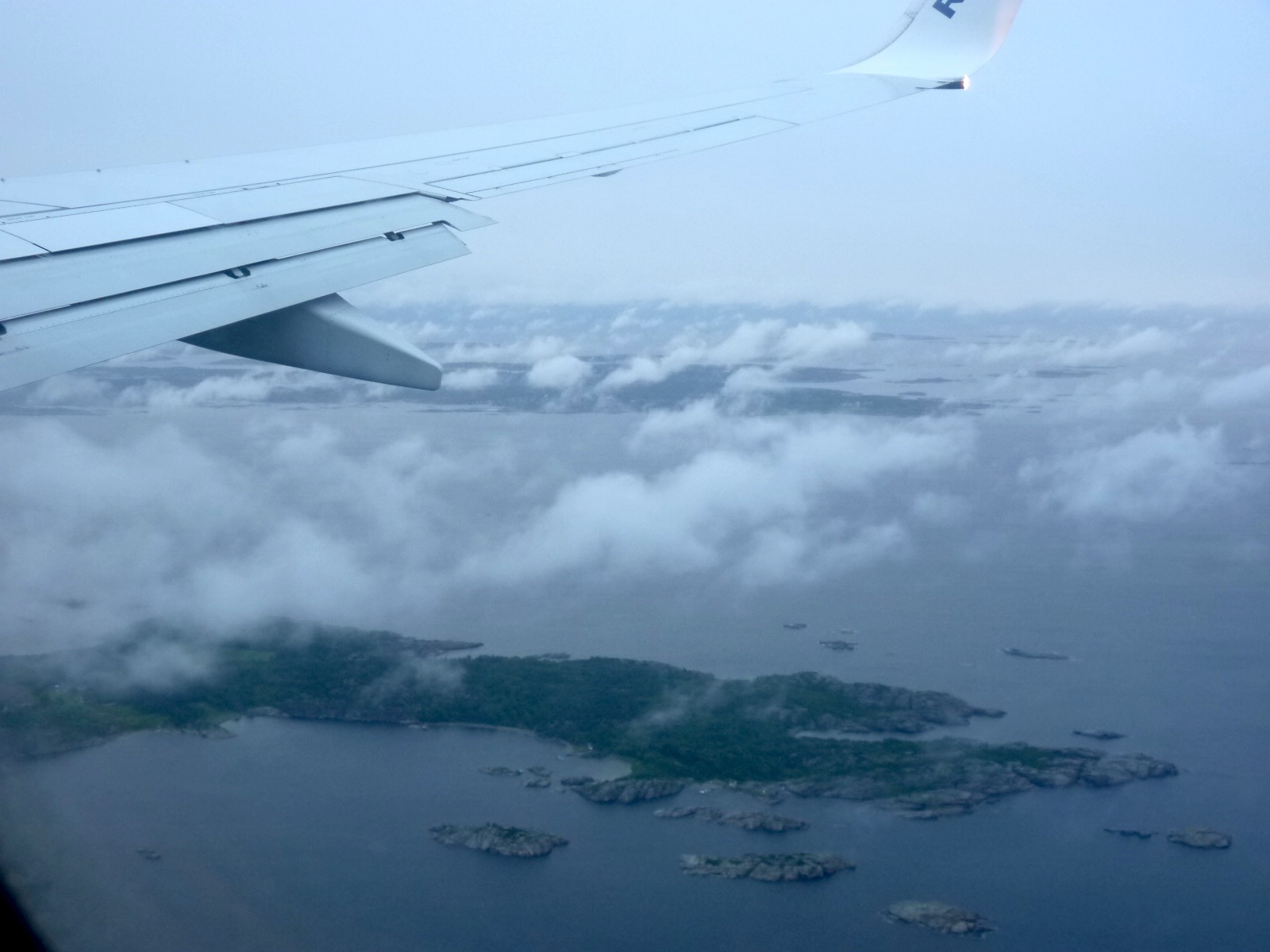
I don't know about you, but when I think of Norway, I think of incredible natural landscape, like fjords. Well, to be honest, we haven't seen that side of Norway...yet. We did see a little fjord flying in; but the south end of the country isn't where the spectacular-post-card-worthy views are. Our housesit is basically smack dab in the center of the country in a river valley 25km north of Lillehammer. It's beautifully green, foresty and lush. Honestly, my first impression of Norway was, "it looks like the Upper Peninsula of Michigan." Rocky inlets, super green land, lakes dotting the landscape - just like Michigan.
We'd like to take a little road trip at the end of our stay with a nice gentleman with whom we couchsurfed our first night here that would take us to the west coast, past some of the famous and outstanding fjords and mountains. Cross your fingers for that. In the meantime, we've been enjoying living in a quaint rural home with spectacular views of the valley below. The 6 hectares (or about 14 acres) of land on which our homeowners live is both field and forest and completely isolated. There is literally not another home within direct view of our house. It's a new feeling to not have to close shades and worry about privacy. The driveway gate is a good 1/2 - 3/4 miles from the house. I like it.
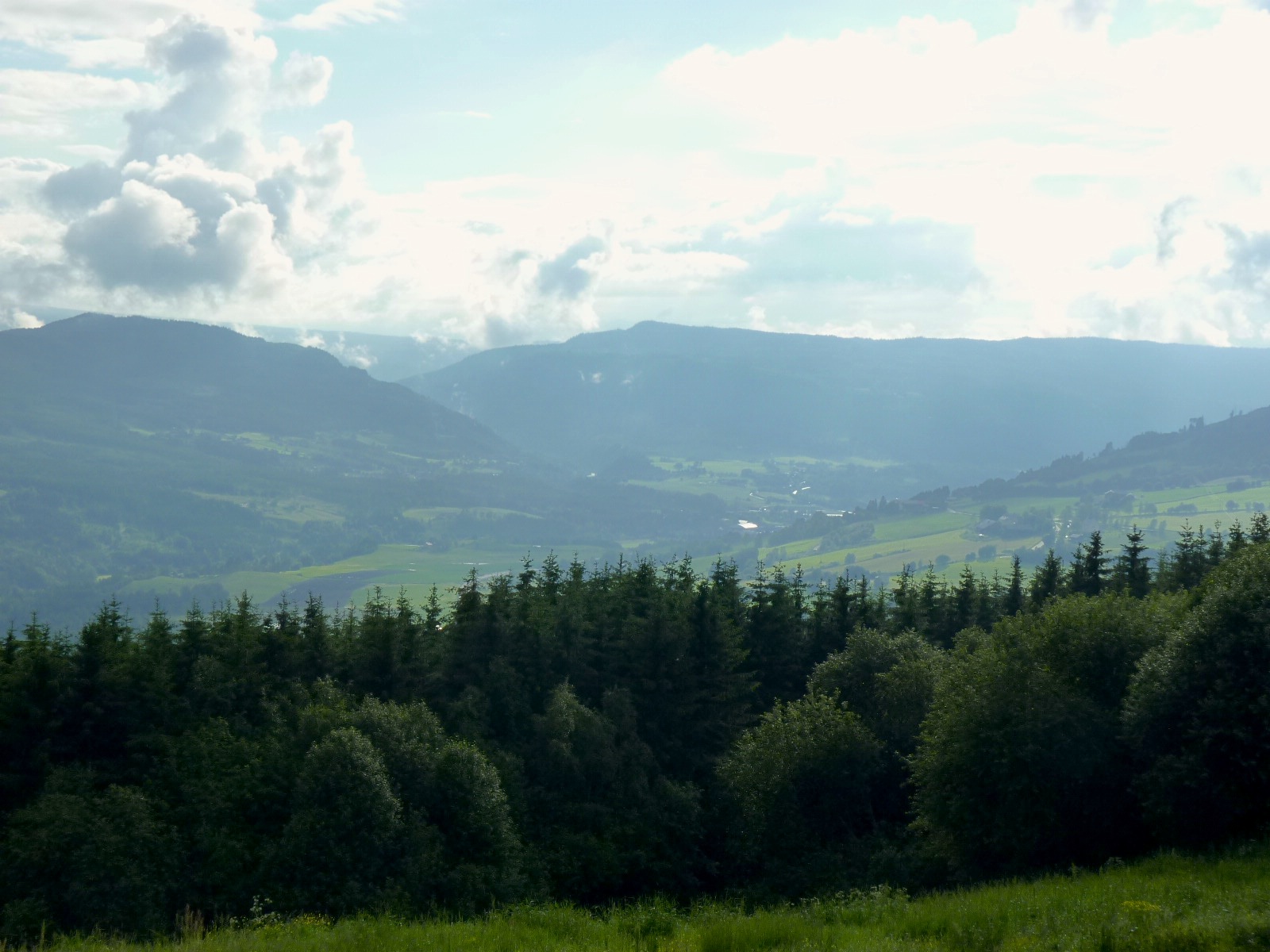
Language
I have no knowledge whatsoever of Norwegian. None. Ok, well now I know how to say thank you (Takk!) but other than that, it's completely foreign. This makes reading signs and trying to pronounce things really fun. Like this word: Havrekli oppskrifter. Say that. It meas "oatbran recipe". Or the word: hovmeister. It means, "butler." One phrase we do really enjoy is something along the line of: Vash de go, which means, "here you go" as in, here, eat this, bon appetit. There are a lot of similar sounding words which does make it easier. It's very fun though.
Money & Economics
It's no secret that Norway is expensive. Having been in Mali, Senegal and Morocco I'm used to experiencing what an underdeveloped country is like. In the UK we got used to being somewhere that had a stronger currency and was therefore more expensive. However, I have never been in what I would consider an overdeveloped country. Everything is at least 30% more expensive here than on the mainland of Europe. For every US dollar we spend, we go through 6 NOK (Norwegian Kroner). To give you an idea, the 1.5L bottle of Coca-Cola we bought today to go with our duty free rum was 29 NOK, just under $5. Petrol, or regular gas for the car, was 15.3 NOK per litre, that would be 56.61 NOK per gallon (roughly) or $9.4/gallon! I will never again complain about things being expensive in the US!
But why is it like this? My question was, if prices keep rising, and everyone complains about the cost of living, why are costs rising? Can't it be controlled? I still don't have an answer, but did read this interesting Reuters Article on Norway that gave a good overview of the situation. There's also this one, which explains that Norway is the second largest producer of oil in the world after Saudia Arabia (didn't know that!!). In short, this is a super rich country. High taxes equal strong social services, but also a high cost of living. Everything is pristine and efficient. Ironic that the power in the entire valley went out our first day here; and since there's no natural gas lines in the country, everything is run on electricity. Everything.
Groceries & Living
Expensive living to us means lots of homey time doing homey things. Baking, cooking, walking the dog, etc. And since we have nothing but time and the sun never goes down our extra long days make for a perfect lifestyle of productivity, relaxation, nature-loving hikes and eating. No wonder the quality of life here is so good! We're making all our bread, cooking tons and we even bought a whole salmon which Jon impressively gutted, fileted and cut up - without the benefit of having a filet knife! Tomorrow = bread baking plus the great salmon cook-off as we prepare our 9-10 portions of beautiful salmon.
The grocery store was a fun experience, despite everything being 3-4 times more expensive than in the states. That salmon was by far the best deal of all - 117 NOK for 3 kilos! That's $20 for a whole 26" salmon! However, if you want to buy 250g of ground beef (about 8oz) you'll pay $6. Iceberg lettuce (isbergsalat) was $2.25 while a 1/2 gallon of milk (lett), and not fancy organic special milk, was $4. We were price hunting too and finding the cheapest products that also looked good.
We did treat ourselves though, because why travel if you're not going to branch out and try new things?? So our splurges included local sweet cheese (geitost ekte) and reindeer sausage (spekepolse reinsdy). Mmm I'm looking forward to it!
It seems like the good deals at the grocery stores include yarn (there's a very large yarn section), hot dogs (called grillposer- don't know why, but they're a good deal), and frozen fish (salmon is orret rund).
Anyway I know I've talked about the cost of things here, but that's the way it is. And it's not just us, everyone we've met is focused on money and the cost of living - and also of course living a good life. Makes me really appreciate our daily sauna time. Yay.
Don't forget you can see all our pics on our Seeking Fireflies Flickr page!
When you rule the world...shouldn't you get their food?
It has been awhile since I wrote a food post and after a month in England, I think it is about time. There are those who would have you believe that English food sucks, and they're kinda right to a point; but the ever growing number of Michelin stars points in the other direction. However, I can't afford to eat in a Michelin starred restaurant!!! With the pound at $1.53 and our budget travels in full effect, even lunch would be extravagant. I would also point out that the great majority of English people can't afford to eat there either. So what does that leave us with: Normal food for normal folks, and thats what I'm gonna talk about.
There is a way that most English food comes: Fried, to within and inch of its life, or in a pastry crust. The one exception is cheap curry (a left over from Indian occupation and a welcome addition to British cuisine). Fish and chips, pasties, pies, etc. are everywhere and relatively cheap.
Their are a couple of classics that are worth a note:
Pasty - A pastry sort of pie (think small flaky calzone) with traditional fillings such as steak and ale, lamb and mint, and the Cornish pasty which is like beef stew in in pastry. Cheap.
Pies (hopefully pork :) - These are free standing little pies filled with similar things as in pasties with the exception of the pork pie. One of my favorite British snack foods, the pork pie is a lump of minced and spiced pork with a substantial layer of gelatin in a pie crust. It is meant to be eaten slightly chilled, but this may make the gelatin layer a little off-putting for some. Jess found them to be intensely "meaty". Cheap.
Black pudding - This is a blood sausage that is cut into a little disk and usually fried. It is part of the traditional Scotish and Irish breakfast. It is quite solid and has a lightly spiced taste and is mostly oats or some sort of grain with small bits of meat and blood. There is really no way to make it sound appetizing but I assure you that a lightly fried egg on top of black pudding is an amazing way to start the day! Cheap.
Little places that do what I like - There is a picture of a whole pig in which Jess and I partook in Edinburgh. It just goes to show that there are little places who take their stuff seriously and offer great food at reasonable prices. I had a good sized sandwich stuffed with tender pork and a piece of the cracklin, topped with BBQ and haggis (spreadable kind of the Scottish classic) for under 4 pounds. A great find. Thanks Jess!
In general, a lot of food is consumed in pubs in small towns and villages (before 8:30!!!, good luck getting food after 9 PM any night in the UK, unless is is donar or a similar fast food). Larger cities of course have various restaurants and there is a large difference in price and quality. You can usually find an okay meal in a pub, like a pie and mash or burger, for about 8-10 pounds. Good food cost a lot of money and is comparable to US prices except that it is in pounds!
Now, on to beer, another English staple. The beer here is generously poured (20 oz pints), a fair price (about 3 pounds per beer), and really rather uninspiring. There is a craze to have "real ales" which are basically English made beers that are pulled from the barrel without carbonation. Some are okay, but I really believe that this beer is meant to be consumed in volume. From someone that is used to an ESB type of beer, and that is mostly what is availible to them, this will seem quite nice; but I'm from Portland and we like our beers to be aggressive, strong (UK beer is between 3-4.5% alcohol by volume; Bud is over 5% to give an example; most NW beers are well over 5%), and packed with flavor which is about as far away from British beer as you can get. Imported beer is available on tap (called a lager) and is usually at least 25-50% more expensive.
A real surprise is that there are a number of very impressive ciders about in England that are exactly the opposite of their beer. Note, I'm not talking about Strongbow, which is basically fortified apple juice and not very good; I'm talk'in scrumpy! Scrumpy is quite flavorful (although it can have an unpleasant bitter taste for some), sits at about 7% abv, and cost as much as the beer. A 50 CL bottle will set you back about 2 pounds in a store and a pint (20 oz) will cost maybe 3 pounds and lay you out on the floor. 4-5 pints equals a kick to the head the next day, so indulge at your own risk.
Wine is expensive and not good here. Granted, we just came from France, but even English people know their wine sucks and import it. Unfortunately, it seems importing wine to the UK makes it about 4x more expensive than in France and with half the quality.
What about spirits you might ask? Well, this is a mixed bag. You know there is something north of England called Scotland and they make a little drink up there, maybe you heard of it. In all seriousness, Scotch is an amazing spirit and really unique in the world of liquor. Too bad it is so damned expensive (I believe more expensive here than in the US much of the time). So here is the rub:
Bartender: Would you like a scotch?
Me: Why yes I would love one.
Bartender: Okay, just let me grab the metal 35 ml (about a child's finger at the bottom of the glass) pour device required by the UK government and i'll charge you 3 pounds. Enjoy!
This sucks. Charge me what you want, but good lord, pour me a proper drink! Here is another thing: I'm in Scotland, but it is discouraged for bars to arrange tastings and you are expected to just buy a full pour. I know just enough about scotch that I can be expensive in a bar doing something like this. If you have the means, it is apparent to me that distillery tours are the way to go.
Well, there is a whole world of food and drink up here that I did not touch on, but you will have to read about it elsewhere as I have been rambling on for some time and we try to keep these things manageable. I look forward to siting down to a lovely NW pint and telling you all about it!
Mysteries Solved! - kinda
My my, does time fly. It's already been three weeks since we ended our jobs at American Village, flew to Florida and arrived back in Europe. How did that happen so quickly?! Well it did. We're currently in Southend, England, in the county of Essex, about 45 minutes east of London by train. It's a bit of a story, but I'll tell you how we ended up here. Sorry for the delay in the post - the blog has been broken all week! The Art of Planning (and the non-art of not planning)
As many of you know, we started this trip 5 months ago with a pretty clear idea of how it would progress. Belgium, Mali, Senegal, Mauritania, Morocco, we thought Spain, but then we got the jobs in France so we headed there. We knew we'd be there until early May and that would end the first 'leg' of our journey. It never really crossed our minds how important that basic outline to our plan was - because it'd always been there. Sure we got sick, we got tired, we got to pick and choose cities and be flexible on timing. But overall, we had the plan.
Fast forward to May 6. We're in Lyon, just finished with camp, with one day in Paris before flying to Jacksonville. We had no place to stay in Paris. Luckily our now former employer offers 1 free night in Paris to all employees, so we were fortunate to take advantage of that and stay in a decent hotel in a cool neighborhood we'd never see (Vincennes, check it out next time you're in Paris!). At the time I remember thinking, "ok, when we get to Florida, I really want to work on finding a great place to stay for when we go back."
But it became abundantly clear to us that we really had absolutely no plan of what our next move would be after Florida. All we had was a return ticket to Paris and an impending date. Turns out also that the weekend we flew back is a holiday weekend, so everything - and I mean everything was booked. Couchsurfing royally failed us (if you're not familiar, couchsurfing.org is a site you can go to in order to connect with people all over the world who will offer a free place to stay) - we probably reached out to over 20 people with no replies. Hostels were booked, airbnb was booked - and expensive, and no replies from TripAdvisor's vacation rentals left us wondering if we were going to have to skip Paris again and pick a random town in France to go to. Luckily at the very 11th hour (as in we didn't have a confirmation by the time we boarded our overnight flight from Charlotte to Paris...) we found a decently priced hotel - and although we wanted to find free or almost-free accommodations - we were so desperate we booked it.
But all of that last minute scramble made us realize that we weren't able to spend anytime even thinking about what we might do after our 3 days in Paris. Money is getting tight and we want to make the most of our time with the least amount of expenditures.
At this moment, I have to thank my dear family, who all throughout my brother's incredible wedding weekend (congrats Jeremy!), were kindly asking, "So...where are you going next?" To which we could only answer, "Um...we land in Paris." (end of conversation)
So after three days, in Paris, between seeing the sights, walking about 20 miles in 2 days and enjoying our last bit of France (for now, hopefully), we connected with a few of Jon's college and work friends, and an old friend of mine to piece together 8 days in the UK. Don't ask us what we're doing next week! We'll let you know :)
All of this has really made me appreciate how the world being one's oyster can be both a blessing and a curse. Transport is expensive, but we could go just about anywhere. The multitude of choices has been our downfall and we're working to figure that one out. For now, we're enjoying the small coastal town of Southend, then up to Peterborough north of London and then up to Newcastle. Funny that in trying to save money we've taken ourselves to the most expensive countries in Europe. Oops.
Hot, Sunny Florida
So what did we do in the States? Other than a brief medical episode (we had to, we've seen doctors in every country, got to keep the streak going at this point), we relaxed, ate delicious home-cooked meals - thanks Mom and Dad - and enjoyed our friends and family in celebration of my brother's wedding.
We also visited Universal Studios and got relish in our dorkdom at the Wizarding World of Harry Potter. We did have to stop ourselves a couple times while marveling at Hogwarts castle and realize that it's silly we're less impressed by real castles. It was a fun time to ride the rides and play all day at the theme park. Even the crazy downpour we walked through was nice - tropical rain is nice and warm - as opposed to the 40 degree frigid rain we were welcomed with in Paris.
Speaking of Paris
It's grand. There simply isn't another word for the size and scale of the City of Light. I've been to Paris before a few times, but I hadn't done the sights in the last few visits. We only had 2 full days and boy did we pack it in. Day one had us at the Eiffel Tower, a walk to Les Invalides (where Napoleon is buried), a visit to the Rodin Museum, Musée d'Orsay and the quintessential eating experience - Royale with Cheese at McDonalds. Day 2 had us on the Right Bank, starting at the Arc de Triomphe and a walk down the ENTIRE Champs Elysée past the Jardin des Tuileries, through the Louvre (we didn't go it, we were too tired), a cross over Pont Neuf (supposedly the most romantic spot in Paris - can you tell by our pictures?), a visit to Notre Dame, ice cream at the famed Barthillon and a walk through the 5th arrondissement up Rue Moufftard and back for a quick break before having a fabulous eating experience at a little neighborhood Basque restaurant. It was an enormous amount of walking - which justified the extra crepes and ice cream - and a lot to see in 48 hours. I already miss it and hope we can go again, but I'll look forward to the English countryside just the same.
Southeast England
We've been blessed to be welcomed by a former co-worker and friend of Jon's into his home for a few days in Southend - heartily described as the "Jersey Shore" of England. I don't know what to say about that, other than I had a lot of fun playing the arcade games the first night we arrived.
We've been enjoying a very 'english' experience - pubs, fish 'n' chips, afternoon tea in a garden, and roaming the countryside of Kent looking at old (as in built in the 14th century) country homes, mansions and castles. I love it!
We're still working out the next leg of our adventure. In a couple of days we should know more. But for now, think England, Hungary, France or Norway. Once we know, we'll tell you why :) We're just as curious as you are (maybe you're curious?) to find out, but that's all part of the fun right? And yes, even though it's uncertain, we're still having a blast!
Cheers!




